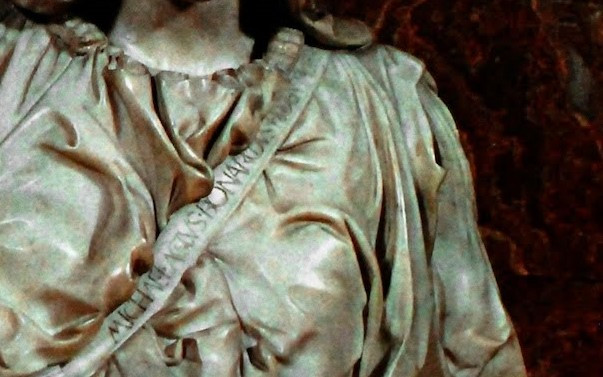JULY 18, 2020 – Fifty-six years ago my mother, younger sister and I took a train trip to the Far East—Rutherford, New Jersey—to visit my uncle and grandparents. Our stay would last a month, and a centerpiece attraction was to be a trip to the New York World’s Fair.
I remember a family conversation around the dinner table two days before our departure. Talk centered on the attractions we’d see at the fair, and my parents, having a shared and abiding interest in art, impressed upon my sisters and me that one of the main draws would be The Pietà. Dad explained that it was “the masterpiece” of Michelangelo Buonarroti, sculpted at the very end of the 15th century and on permanent display inside St. Peter’s Basilica. Dad said it was one of the greatest works of art ever created. That he assigned such significance to The Pietà (the “Pity”) and that Mom agreed without hesitation told me that the odds were good: Michelangelo’s “masterpiece” was, in fact, a masterpiece.
Dad had read an article about the negotiations involved between the Vatican and fair officials regarding the transport, exhibition, and security for the marble Mary and Jesus that was expected to draw millions of admirers to the New York World’s Fair. This back story had so intrigued Dad that his detailed exposition was longer than the article—further emphasizing in my impressionable mind, his admiration for the 565-year old statue.
The next evening, as last-minute preparations were underway for our departure the next morning, Dad said he hoped we’d have a wonderful trip. When I asked him what he wanted us to get him in the way of a souvenir, he laughed and said, “Bring me back a model of The Pietà!”
I was taken aback. I’d been thinking a pennant of the sort my older sisters collected on family trips. Or a Statue of Liberty key chain or some other little tchotchke with “New Jersey” written on it. But a model of a larger-than-life-size, 15th century marble statue, which Dad proclaimed to be one of the greatest works of art ever? Would such a thing even be available? Wouldn’t it have to be made of stone? How could we possibly carry it in a suitcase? Where would Dad put it once we got it home? Nevertheless, given Dad’s deep appreciation for Michelangelo’s mighty work and Dad’s explicit request, I was determined to do the best that could be done.
The train trip was magnificent, as was the reception by our uncle and grandparents. My sister and I settled with ease into their gracious home and habits. We luxuriated not only in the presence of a television—my parents had jettisoned ours before my sister was born—but in the unbelievable fortune of two of them, in case my sister and I didn’t want to watch the same cartoon show.
Then, of course, came the big day, the day our uncle took us to the World’s Fair.
(Cont.)
(Remember to subscribe to this blog and receive notifications of new posts by email.)
© 2020 by Eric Nilsson
